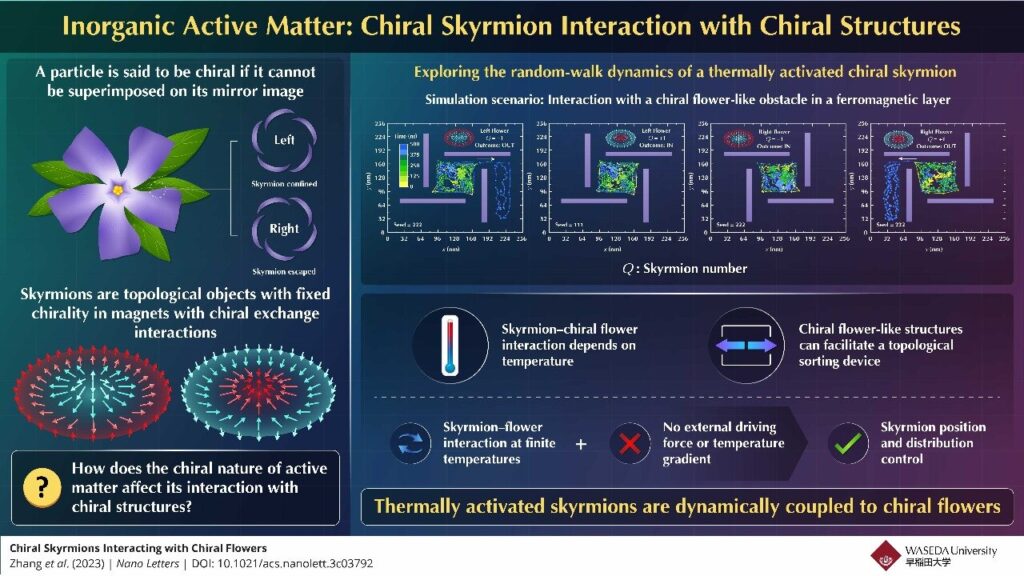In nature, the collective motion of some birds and fish, such as flocks of starlings and shoals of sardines, respectively, can generate impressive dynamic phenomena. Their study constitutes active matter science, which has been a topic of great interest for the past three decades.
The unique collective dynamics of active matter are governed by the motion of each individual entity, the interactions among them, as well as their interaction with the environment.
Recent studies show that some self-propelling molecules and bacteria show circular motion with a fixed chirality (the property of an object where it cannot be superimposed upon its mirror image through any number of rotations or translations), which can enable the selection of molecules and bacteria with specific chirality based on their dynamics. However, there is a lack of research on active matter-like objects in non-biological magnetic and ferroelectric materials for electronic device applications.
In this regard, chiral skyrmions are promising. They are a special type of spin textures in magnetic materials with asymmetric exchange interactions, which can be treated as quasi-particles. They carry integer topological charges and have a fixed chirality of either +1 or -1.
Recently, a group of scientists, led by Professor Masahito Mochizuki from the Department of Applied Physics at Waseda University and including Dr. Xichao Zhang from Waseda University and Professor Xiaoxi Liu from Shinshu University, has extensively studied the active matter behaviors of chiral skyrmions. Their paper is published in the journal Nano Letters.
In this study, the scientists placed chiral skyrmions within chiral nanostructure obstacles in the shape of a simple chiral flower. They then studied the random-walk dynamics of the thermally activated skyrmion interacting with the chiral flower-like obstacle in a ferromagnetic layer, which could create topology-dependent outcomes.
“Our research demonstrates for the first time that magnetic chiral skyrmions exhibit active matter-like behaviors even though they are of non-biological origin and even merely intangible spatial patterns,” says Prof. Mochizuki.
The skyrmion with a chirality of -1 has the potential to leave a left chiral flower, and the skyrmion with a chirality of +1 has the potential to leave a right chiral flower. The researchers conducted a series of simulations to observe how skyrmions would behave in both cases at different temperatures: 100 K, 150 K, 180 K, and 200 K.
They set the simulation time as 500 ns, with a time step of 0.5 ns. The team found that depending on the combination of variables, the skyrmion either remains within the obstacle or escapes it. Since the motion of the skyrmion is due to temperature-dependent Brownian motion, which is disorderly in nature, this is an interesting case of getting an orderly result through disordered motion. Notably, this system can be used to develop a topological sorting device.
When asked about the long-term implications of their work, Prof. Liu remarks, “Our research results may be useful for building future information processing and computing devices with high storage density and low power consumption.”
“In the long term, they may provide guidelines for the design and development of non-conventional electronic and spintronic hardware, where the information is carried by topological spin textures in nanostructures. This achievement is expected to improve people’s lives as they would be able to process information in an energy-efficient manner, leading to a greener society,” concludes Dr. Zhang.


